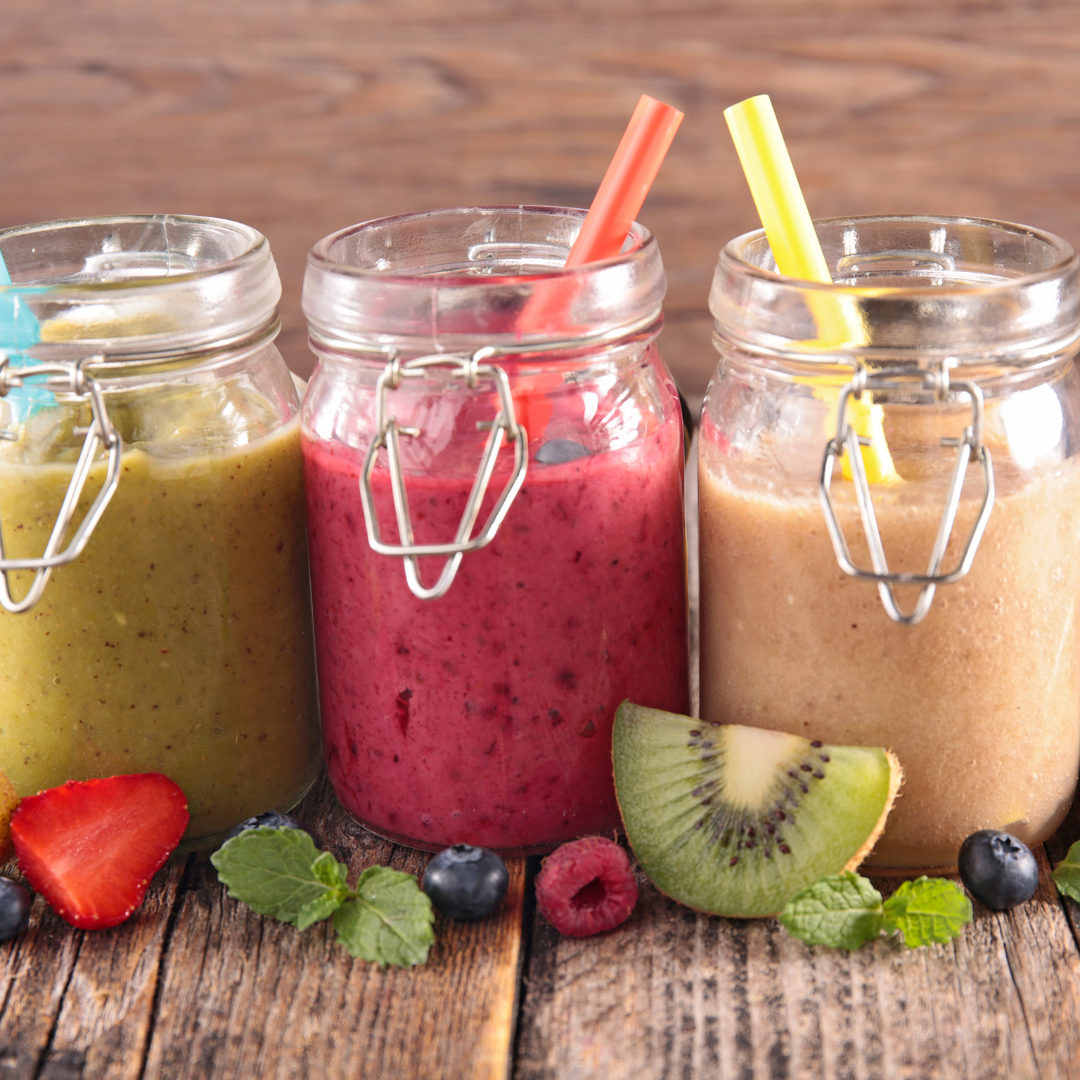… oh my!Each Wednesday I teach on a topic, or a few topics, that are relevant to what is going on in my patients/clients, friends, and/or family’s lives. This info is disseminated during a very informal live broadcast on Instagram or Facebook – usually around …
… oh my!
Over the years I’ve noticed a pattern of topics/ailments/injuries that seem to come in groupings on a weekly and sometimes monthly basis. Above all, protein facts and myths seem to surface more often than anything else.
A common set of topics were protein, GERD, and smoothies – mostly.
Protein
Most of our patients/clients who deal with acid reflux or GERD are not getting enough protein in their diet on a regular basis. I am not an advocate for counting calories or macros on a daily basis. It’s exhausting or annoying to most people. And it’s not accurate.
Did you know the nutrition labels are allowed to be 20% off! That can be disastrous or even deadly for someone with T1D (Type 1 Diabetes). Those 100-calorie packs might be 120 calories or 80 calories. And that’s just looking at calories. What about protein? Carbs? Fat? EVERYTHING on the label is a guesstimate. This is the driving reason I do not ask my patients to track their food in apps for more than 1-2 days. That, and the psychological ramifications that often occur. Anorexia, Bulimia, and Orthorexia are very real.
We have been brainwashed for decades that “more veggies” is the only answer to any health ailment.
The general guideline we prescribe to our patients is 1 gram per pound of body weight – not 0.6-0.8 g/kg of body weight. Robb Wolf and Diana Rodgers explain the inconsistency and inaccuracy in detail in Sacred Cow. I highly suggest reading it – maybe even more than once.
For those who are not calorie or macro counters, how do you know if you are getting enough protein?
Fill half of your plate with animal protein.
It’s really that simple.
Smaller people tend to eat less. Bigger people eat more. Using the guideline of the “1/2 plate” tends to work out to roughly the recommended amount. Again, these are basic guidelines.
I also recommend eating your protein first. You’d be surprised how quickly your body doesn’t crave sweets once it has gotten real nutrient-dense food. Try it.
Liquid Food
UGH! I feel like a broken record with this one. A really annoying broken, skipping record with a monotone song blaring over loudspeakers in the town square in the middle of the night that grates on everyone’s nerves and won’t let you sleep. Good!
Chew your food.
Chew
Your
Food
One more time for the people who don’t think this applies to them because of their weightlifting schedule.
Chew. Your. Food.
PS That doesn’t mean chew your shake.
This does not apply to someone who is on a liquid diet because they can’t eat.
If you can chew and swallow food, please do so.
People who consume a liquid diet for 60 days are known to have gall bladder issues, sometimes resulting in removal. This is the same for low-fat and non-fat diets. Losing weight too quickly can lead to gallbladder dysfunction, too.
When it comes to many systems in our body, the phrase “if you don’t use it, you lose it” applies.
In the case of your gall bladder, it’s very true.
If you currently have a hard time digesting quality fat, contact me at marci@marcizavala.com and we can problem-solve ways to remedy this.
What else …
I also covered chicken briefly. Here’s the take-home – choose thighs over breasts. Not only does it have better flavor, but it also has a better nutrient profile. Chicken doesn’t have the best Omega 3:6 ratio, so don’t overdo it either!
Above all, thank you for reading!
References:

Comments